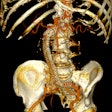Dear Advanced Visualization Insider,
Computerized texture analysis has been tapped for a wide variety of specialized tasks but, as far as we know, never to determine drug resistance.
Until now, that is. Funded by a grant from the U.S. National Institutes of Health, researchers in Minsk, Belarus, have set out to determine if they can separate drug-resistant tuberculosis from the nonresistant strain. Drug resistance is a growing problem that defies easy solutions, but this team has taken a big step by determining which image features make the difference.
In bladder cancer, MRI is doing yeoman's work in the task of replacing uncomfortable and potentially risky optical cytoscopy with a noninvasive technique known as virtual cytoscopy. Writing in the Berlin-based International Journal of Computer Assisted Radiology and Surgery, the research team from China used virtual cytoscopy to find bladder cancer tumors using an algorithm that tracked the thickness of the bladder wall. See how they did it here.
In orthopedics, computer power is pushing ultrasound to places it's not accustomed to, according to a study that uses the modality for bone segmentation. Thanks to an algorithm that accurately delineates bone surfaces, the researchers see a day when they'll be able to move away from intraoperative fluoroscopy, which carries a hefty radiation dose, to radiation-free ultrasound that can be used to check and recheck bone positions and shapes during surgery. You'll find the rest of the story here.
We invite you to scroll through the links below for rest of the news on computerized solutions to some of radiology's toughest problems -- right here in your Advanced Visualization Community.















